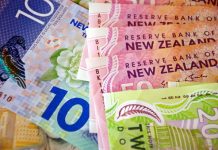The first view on Big Tech earnings wasn’t inspiring. Tesla’s earnings missed estimates for the 4th consecutive quarter as revenue from car sales declined 7%. The company’s energy generation and storage revenue doubled and services revenue rose 21%, but the latter couldn’t make up for the EV sales decline. As a result, Tesla earned $1.48bn in Q2, down from $2.7bn a year earlier, and lower than the $1.69bn income penciled in by analysts. Shares slashed almost 8% in the afterhours trading, and will probably sit right on an important Fibonacci support, the major 38.2% retracement on April to July rebound. A slide below this level will technically send the share price into a bearish consolidation zone and increase the chances of deeper downside pressure, unless Elon Musk comes up with new and exciting ideas/updates about robotaxis, humanoid robots, etc.
Over at Google, the parent Alphabet did well last quarter. The company’s Q2 revenue topped estimates, cloud-computing sales rose by a better-than-expected 29%. But the number looked meagre compared to Amazon Web Services’ 38%. The search engine printed a 14% growth in revenue – believed to be partly due to AI – but it was not enough. Google reported the smallest earnings beat since early 2023 and the share price fell 2% in the afterhours trading.
As such, two of the Magnificent 7 stocks failed to create euphoria when they reported their Q2 results yesterday. The less-than-ideal set of earnings comes at a time when investors are questioning whether the AI rally has gotten ahead of itself. Elsewhere, UPS tanked 12% to the lowest since July 2020 as its earnings missed estimates. Wage inflation and soft package demand weighed on the Q2 results, GM fell more than 6% despite a profit beat and despite raising its profit outlook on truck demand. Another delay in its electric pickup plant didn’t please investors. Spotify was the only bright spot in the earnings crowd, as their shares jumped 12% as the paid subscriptions grew more than expected. But it was not enough. The S&P500 and Nasdaq both closed yesterday’s session with small losses, and the futures are both in the negative this morning. Nasdaq futures are down by almost 1% at the time I am talking here.
In Europe, the news weren’t much better. LVMH saw its ADRs decline almost 5% after announcing that revenue in China-region fell 14% in Q2 – in line with a broad-based weakness in other luxury houses across Europe as well.
The situation in China doesn’t enchant commodity traders either. Copper futures are down by 20% since the May peak, while US crude cleared the 200-DMA without much problem despite a 3.9-mio fall in US oil inventories last week – that could’ve slowed down the selloff, but did not. The next target for the bears stands near $77pb, the last major Fibonacci retracement on June to July rebound – that was tested but not broken yesterday. Trend and momentum indicators are comfortably negative suggesting that the $77pb support could be broken to clear the way for a deeper selloff to the $75pb level.
In the FX, the US dollar index was slightly stronger yesterday even though a weaker-than-expected Richmond manufacturing index, a more than 5% decline in existing home sales and a solid 2-year bond auction suggested a favourable environment for the Fed doves. The US 2-year yield sank to 4.45% and the 10-year yield stabilized near 4.25%. The EURUSD fell below 1.0850 as Cable slipped below 1.29. The rapid rise in speculative net positions warn that the bullish positioning in sterling looks stretched, but big names like Amundi turned bullish in sterling as its FX head said that he expects gains to extend to $1.35. Goldman Sachs also predicts further gains on brighter economic outlook and political stability. And the expectation that the Bank of England (BoE) could cut rates less than major peers also offers support. A minor support is seen near 1.2870, and a major support to the latest rebound stands at 1.2760, the major 38.2% Fibonacci retracement that should distinguish between the actual positive trend and a medium term bearish reversal.
On the flip side of the word, the USDJPY fell below the 155 mark on rising bets that the Bank of Japan (BoJ) could go ahead and hike its policy rate next week. An unexpected decline in the July manufacturing PMI to the contraction zone certainly could’ve spark a certain selloff but it didn’t, meaning that the trend weighs heavier than the data into next week’s BoJ decision. In Canada, the Loonie suffers from a sharp fall in oil prices and dovish Bank of Canada (BoC) expectations. The BoC is expected to announce a 25bp cut when it meets today. A sufficiently week decision could send the USDCAD above the 1.38 level as the Federal Reserve (Fed) cut expectations are mostly priced in by now.
Zooming out, are getting closer to the time for the other central bank doves to catch up with the Fed doves, and that process could slow down the depreciation of the US dollar against most majors. That’s perhaps why yesterday’s weak data from the US failed to encourage a further weakness in the US dollar index and kept the pair above the 200-DMA. But in the medium run, expect the US dollar to reverse the ytd positive trend and give the global monetary policy easing era a healthier outlook.












